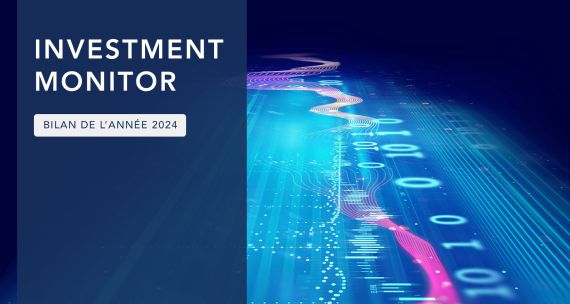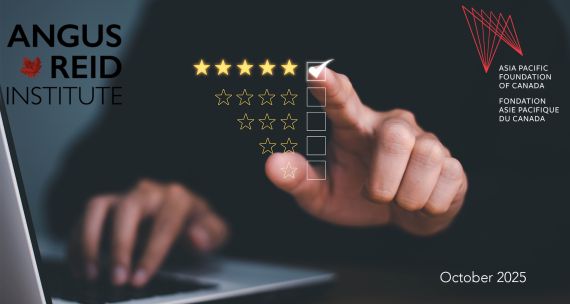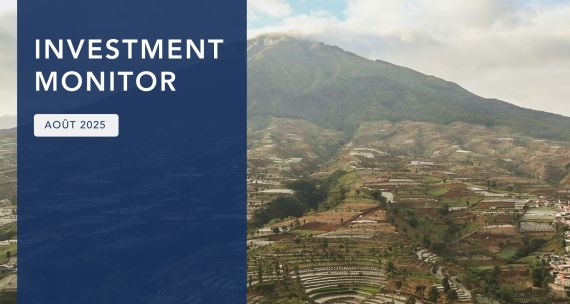With the objective of learning from the rich experiences and lessons that other countries have gained from small- and medium-sized enterprise (SME) export assistance programs, the Asia Pacific Foundation of Canada presents a new research report series, “Going Global.” To read the entire report, please jump to the blue download tab at the end of this piece.
---
Information is at everyone’s fingertips globally. At the touch of a button on a smartphone, companies worldwide are able to access information about industries, companies, and products in virtually any foreign market. However, the sheer volume of information has made it even more important for companies and their products to stand out from the information noise. One initiative that tries to lift Indian companies’ products from the noise is called “Reverse Visits by Foreign Buyers.” This scheme is part of the Market Access Initiative (MAI) scheme under the Ministry of Commerce and Industry. The MAI scheme is an export promotion funding mechanism acting as a catalyst to promote India’s exports on a sustained basis. The overall scheme is designed to support specific products or to target specific countries of strategic importance. Assistance is provided to export promotion organizations, trade promotion organizations, national-level institutions, research institutions, universities, laboratories, exporters, etc., to increase exports through accessing new markets or increasing the share in existing markets. The “Reverse Visits by Foreign Buyers” scheme is one of several initiatives aimed at attracting foreign buyers to the Indian market.
The program does this by assisting organizations establish deep, personal relationships. It provides extensive financial support for reverse visits by major foreign buyers to India. This scheme is based on the “focus product” and “focus market” concept. Under this instrument, eligible Indian organizations are provided assistance to invite representatives of leading potential buyers to attend seminars, trade fairs, and exhibitions. The assistance provided amounts to two-thirds of the total approved expenditure; the remaining one-third must be covered by private funds. There are many other expenses that are waived like venue costs, publicity costs, translation and interpretation costs, and air travel (100% of the cost is covered).
OBJECTIVES OF THE PROGRAM
The overall objective of this initiative is to encourage foreign buyers, foreign trade journalists, and representatives of leading buying houses to visit trade fairs, exhibitions, workshops, and seminars and/or to visit important businesses and organizations in India in order to make them better aware of India’s capabilities and steer them toward sourcing from India.
While there is no restriction with regard to industries, per se, the program is designed to lead to certain focus areas. The reasons are twofold. First, the “Reverse Visits” scheme is not centrally administered; rather, it is a funding pool from which other organizations (such as sector organizations) can draw. Second, the funding guidelines require a strong focus from the applicant. Therefore, depending on the priorities of applicant organizations, certain industry focus areas may emerge. Recent practice has shown that the sectors that dominate the use of the program are those that have a strong base in India, such as textiles, pharmaceuticals, and handicraft.
In principle, buyers (visitors) under this initiative may originate from any country. There are no known limitations, although priority is given to buyers from Latin America, Africa, the Commonwealth of Independent States, and Association of South East Asian Nations +2 countries (China and Japan).
A full list of organizations that are approved as grant recipients under India’s Market Development Assistance program and those that can sponsor applications by their members can be found at http://www.fieo.org/view_section.php?id=0,578,579.
SPECIFIC INTERVENTIONS
Under the “Reverse Visits by Foreign Buyers” scheme, financial assistance may be given to different types of recipients, including the following:
- Departments of the central government;
- Export promotion councils;
- Registered trade promotion organizations;
- Commodity boards;
- Apex trade bodies recognized under India’s foreign trade policy, or export-import policy;
- Recognized industrial clusters; and
- Individual exporters.
- Funding decisions are made either directly by the Ministry of Commerce and Industry’s Department of Commerce or by organizations that are approved by the Ministry for the disbursement of MAI funds. Decisions are made on the basis of formal applications, which are required to be for a particular product for a particular market. Furthermore, there are a number of other conditions:
- The proposal should not duplicate the efforts of any existing activity or organization in the same field.
- Assistance will not be provided for activities already funded under the Market Development Assistance program.
- The funding for the program will be on a cost-sharing basis. Under normal circumstances, the mechanism will fund two-thirds of the total approved expenditure for one visitor. However, the Empowered Committee, a committee that considers and approves proposals as well as monitors the implementation of approved proposals, may consider enhancing or curtailing the level of assistance based on the merit of the program.
The following sub-components would be covered:
- Venue costs;
- Publicity costs for the event;
- The cost of catalogues and other material;
- 60% of translation and interpretation costs;
- 60% of production costs of electronic product catalogues;
- Any other component approved; and
- 100% of the air travel costs of foreign visitors to India (although foreign visitors must bear their own lodging expenses).
The selection of foreign buyers to be invited is based on a set of criteria, such as the foreign buyer’s company’s revenue and the status of the foreign buyer (ideally, the buyer should be the owner or a C-level employee).
OUTCOMES ATTRIBUTABLE TO THE PROGRAM
Complete usage data for this funding mechanism is difficult to identify. However, we were able to access a list of projects funded between 2014 and 2016, which gives some insight into how the “Reverse Visit” scheme is being utilized. In chronological order, funded projects are as follows:
- Indian Silk Export Promotion Council: Organizing reverse buyer-seller meet with Silk Paradise in New Delhi in October 2014: $223,370
- Madhya Pradesh Laghu Udyog Nigam Limited: Organizing reverse buyer-seller meet at the seventh MP Exportech in Bhopal in October 2014: $178,695
- Telecom Equipment and Services Export Promotion Council: Organizing reverse buyer-seller meet in New Delhi in December 2014: $67,011
- Pharmaceuticals Export Promotion Council: Organizing reverse buyer-seller meet at World Ayurveda Congress in New Delhi in December 2014: $148,913
- Madhya Pradesh Laghu Udyog Nigam Limited: Organizing reverse buyer-seller meet at the eighth MP Exportech in Gwalior in January 2015: $163,804
- Export Promotion Council for Handicrafts: Organizing reverse buyer-seller meet at the Indian Houseware and Decoratives Show in Noida in April 2015: $260,597
- Karachi Chamber of Commerce and Industry: Organizing reverse buyer-seller meet in Srinagar in April 2015: $148,913
- Engineering Export Promotion Council: Organizing reverse buyer-seller meet in Mumbai in May 2015: $88,975
- Export Promotion Council for Handicrafts: Organizing reverse buyer-seller meet at the India International Fashion Jewellery and Accessories Show in Noida in July 2015: $223,370
- Sports Goods Export Promotion Council: Organizing reverse buyer-seller meet (toys) in Mumbai in September 2015: $55,842
- Federation of Indian Chambers of Commerce and Industry: Organizing reverse buyer-seller meet and publicity campaign with VASTRA, the International Textile and Apparel Fair, in Jaipur in October 2015: $558,423
- Carpet Export Promotion Council: Organizing reverse buyer-seller meet during the India Carpet Expo at Varanasi in October 2015: $446,738
- Sports Goods Export Promotion Council: Organizing reverse buyer-seller meet (sports) in New Delhi in November 2015: $33,505
- Federation of Indian Chambers of Commerce and Industry: Organizing reverse buyer-seller meet with EIMA AgriMach India in New Delhi in December 2015: $223,370
- Madhya Pradesh Laghu Udyog Nigam Limited: Organizing reverse buyer-seller meet at the ninth MP Exportech in Gwalior in January 2016: $148,913
APPLICATION TO CANADA
This instrument is low in complexity, relatively low in cost, and easy to deploy. One recommendation would be to identify areas (sectors, target markets) in Canada’s Global Markets Action Plan that would best lend themselves to arranging such visits. An ideal approach would be to arrange a similar mechanism of reverse visits around export focus areas (industries), export or regional clusters, or trade shows and other events taking place in Canada.
SOURCES
Federation of Indian Export Organizations (2006-2016). Market Development Assistance Scheme (Revised Guidelines w.e.f 1.4.2006), http://www.fieo.org/view_section.php?id=0,578,579.
Federation of Indian Export Organizations (2006-2016). Market Development Assistance Scheme – Powerpoint presentation, https://www.fieo.org/FIEOMISC/isomanuals/mrmmeeting/mai.ppt.
Federation of Indian Micro, Small and Medium Enterprises (2014). Market Access Initiative Scheme, http://www.fisme.org.in/export_schemes/DOCS/B-1/MARKET%20ACCESS%20%20INITIATIVE%20SCHEME.pdf.
How to Export Import (eds.) (2016). How does MAI scheme promote Exporters in India?, http://howtoexportimport.com/For-Beginners/How-does-MAI-scheme-promote-Exporters-in-India--4120.aspx.
Ministry of Commerce and Industry (2014). Revised Market Access Initiative (MAI) Scheme, http://commerce.nic.in/trade/Revised_MAI_Guidelines_W_E_F_04_08_2014.pdf.
Other reports in our “Going Global” series:
Going Global: Learning from Global Innovative SME Export Assistance Programs
Sector-Specific Initiative: Austria’s Go Silicon Valley
Sector-Specific Initiative: The U.K.’S Cyber Growth Partnership
Market-Targeting Initiative: Israel’s Smart Money Program
Market-Targeting Initiative: Israel’s Indo-China Fund
Management-Focused Initiative: Australia’s Women In Global Business
Management-Focused Initiative: Germany’s Accounting Services
Leveraging People-to-People Connections Initiative: India’s Reverse Visits
Leveraging People-to-People Connections Initiative: The U.K.’s Connectivity Initiatives
Branding-Focused Initiative: India’s Brand Equity Foundation



